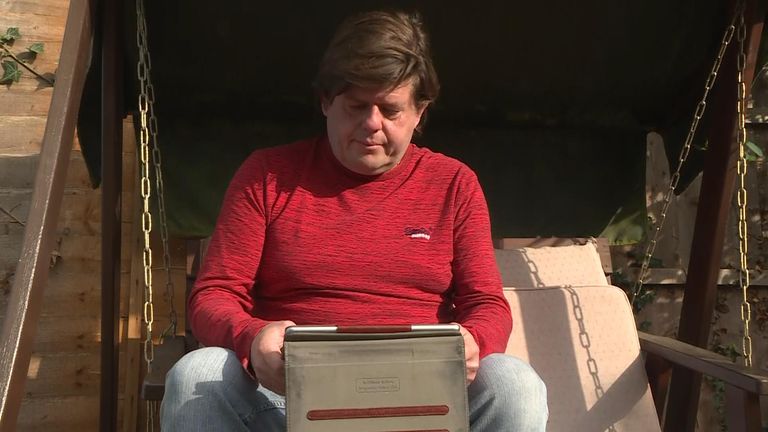Coronavirus: ‘I’m sad or down most days’ – the devastating impact of lockdown on mental health
“If I wake up sad, then I just have 15 hours of feeling sad and then I go to bed even sadder.”
This is Stephen Liddell’s stark assessment of what his life has now become. He suffers from chronic asthma and so has been shielding for months. Although it’s protected him from coronavirus, it’s exposed him to another illness altogether.
“I’m sad or down most days. I can’t see any end in sight. And I spend quite a few days just wishing I was dead because there’s nothing to look forward to. There’s no one helping me. And no one seems to care,” he told me.
Stephen moved to Bushey Heath, near Watford, at the end of January. But instead of exploring his new neighbourhood and making friends, he’s been shut off from the outside world for nearly six months, and now feels like a prisoner in his own home.
“It’s kind of like being in solitary confinement, but I haven’t done anything wrong,” he said.
Stephen works as a tour guide and such is enthusiasm for the job, he hadn’t had a day off since 2013. But the pandemic changed everything. His next job isn’t until May 2021.
The lack of human contact has ushered in extreme depression, which has been compounded by financial problems. Although he’s self-employed, he doesn’t qualify for the government support scheme. Without any savings to fall back on, he recently started visiting food banks.
Talking about his problems helps but I was just the fifth person Stephen’s spoken to since February. I suggested he call the Samaritans helpline, which is there for anyone who is struggling.
“I’ve called two or three times, but I’ve always hung up. I don’t want to be a bother to people. And because I haven’t spoken to anybody, if i started telling everybody my problems it would be a long long list,” he said.
Stephen’s story is sadly not unique. A study by the University of Bath has laid bare the devastating impact of lockdown on the nation’s mental health.
Of the 800 people who took part, a quarter had significantly elevated anxiety and depression, exacerbated by lockdown and isolation.
Almost 15% of participants reached clinical levels of health anxiety, which means a fear of contracting a serious illness despite medical reassurance.
This is triple what’s considered to be the normal level of clinical health anxiety in the population.
Reaching clinical levels means their health anxiety had become distressing and was likely to be causing preoccupation and disruption to normal activities.
Participants who classed themselves as “vulnerable” according to government categories reported twice the rates of health-related anxiety than the general population.
Source: Read Full Article



